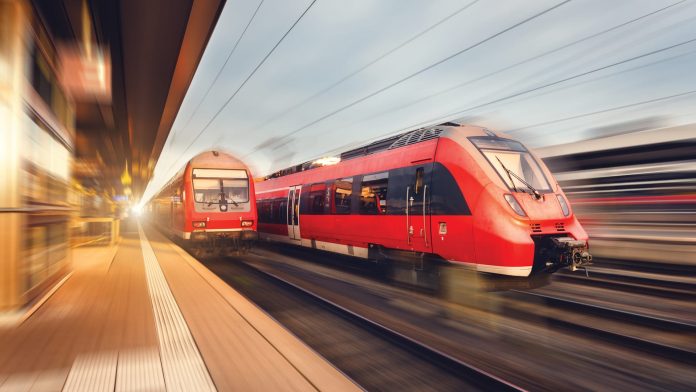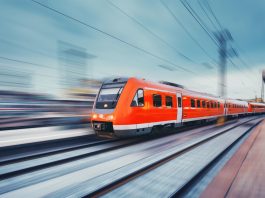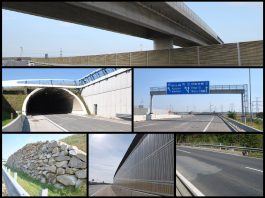As cities across the globe prioritise sustainable living, building new infrastructure and maintaining existing infrastructure safety are vital tenets of sustainability.
Make sure you head over to PEC – Petschacher Consulting’s eBook for an riveting look at the industry! Don’t miss out on their partner page too.
PEC – Petschacher Consulting ZT-GmbH (PEC) was established as a one-man business by Dr Petschacher in 1997 and transformed into a ZT-GmbH in 2006. The company’s field of business includes risk and reliability analysis of technical systems, constructive civil engineering and planning, static analysis of bridges, building and construction of sustainable infrastructure systems. PEC’s mission statement is the principle of sustainability; and the company employs specific expertise in probability in many of its projects to ensure infrastructure safety.
Why is well maintained infrastructure important as society begins to develop modern infrastructure and transport systems?
New rail lines are built with two or more tracks for high speed and represent state of the art constructions. Older railway infrastructure for normal speed engines is commonly more than 60 years old. These constructions are now coming to the end of their technical lifetime and need increased effort of maintenance until they can be updated. Short term decisions on renewal are not possible due to economical boundaries on railway networks. Owners of railway infrastructure have to guarantee time availability of their network for industry to use it for their transport, so penalties must be paid if transport delays occur.
Business today has become very dynamic, reducing or eliminating stock and distributing work across countries which significantly reduces costs. Railway infrastructure is a vital part of this production and must provide availability for transport.
The load models for railway bridges have changed over last 100 years. Newly built bridges are designed to resist 100 years’ operation time; and bridges from last century have to be monitored in their last phase until critical capacity levels are crossed.
What systems can be put in place to help minimise wear and tear on infrastructure and ensure that structural problems can be identified and fixed before major problems occur?
Generally speaking, wear and tear is the issue. Continuously changing stresses reduce the load carrying capacity with time until it breaks. The type of structure will dictate whether serious further problems will occur or if further usage is possible. During regular inspection such shortcomings can be detected: inspections take place every six years with smaller investigations every two years, which may be too long. In the meantime further damage may occur, leading to serious problems in infrastructure safety.
The use of structural health monitoring (SHM), observing essential parameters of a bridge, may be a solution. Depending on the type of static system and used material, these parameters may differ. We found that observation of bending of bridges at midspan is the best. Here every shortcoming may be summarised, resulting in an increase of curvature. Appropriate danger alerts may trigger a rescue chain. The definition of a warning or alarm level is clearly an iteration process at the beginning, combined with an Artificial Intelligence component telling us if repair is plausible.
The weight of a train’s impact on the tracks can be measured with Bridge Weigh-In-Motion (BWIM), which gives an axle load reading as well as the possibility to count the stress cycles on sensitive locations of the bridge.
How can WIM and other structure technologies help to improve public infrastructure safety and prevent major accidents, congestion and other traffic problems?
Bridge WIM is a dynamic measurement with a high sampling frequency where actual loading is in focus. Trains normally have maximum axle loads of 22.5 tonnes. Due to the usage of rail infrastructure by various foreign companies, which adhere to different standards in rolling stock, higher axle loads may happen. For such cases an observation makes sense combined with a camera to detect the train number. Violations can then be traced to companies.
SHM is a low frequency measurement running long term. It selects a few significant properties of a structure and provides a picture of its condition, gauging changes in structural stiffness which may result from deterioration or fatigue; as well as observing tilting or other relative movements triggered by soil slides. The sensor for this must be very sensitive because the ordinate of measured parameters is in the range of micro- and milli-units.
In order to become to an applicable hardware used on bridges – which must be capable of withstanding rough conditions outside – high effort must be put into its development. High resolution for analogue to digital conversation and low power consumption are necessary, limiting the range of microprocessors and hardware designs which can be used.
What can be done to provide secure networks for smart transportation infrastructures?
We started to develop a data grabber with eight voltage and two current sensor inputs where a sampling rate of up to 3000 Hertz on all sensors is possible. Two possible scenarios are possible.
In BWIM modus, one device can be used per track and additional devices can be connected to each other in a local network. One device is designated as the master data collector from the others and self-records for each train event. It sends a message to a central server telling it that a record is available; and the central service takes care of data uploading and further processing.
In SHM modus it is preferable that one device per bridge is installed, measuring specific bridge parameters. The device is set up to take only a few measurements per day, say twelve every two hours. Once a day it connects to the central server and stays online for a short time. The server takes all records from the device and processes them.
One or more connected data grabbers and enclosed sensors can be powered by photovoltaic cells. All power intensive CPU work is done on one central place. Bridges equipped with it become ‘smart’ and can form a virtual network.
How can society ensure that transportation networks satisfy high mobility demand while adapting to modern smart cities?
Transportation networks are on the way becoming smart: this is done with traffic management in mind. We consider the structural reliability of rail infrastructure. Solving this seems to be paramount when speaking about infrastructure safety. Decision makers have to consider problems which have not yet arisen with infrastructure; for example, costs arising from mining, interior construction and electrical and control equipment. Each cost part is approximately one third of the total. Bridges are much cheaper and only incur construction costs. The move to smart technology for considering infrastructure costs simply should be done.
Dr Markus Petschacher
PEC – Petschacher Consulting, ZT-GmbH
+43 4276 33780









